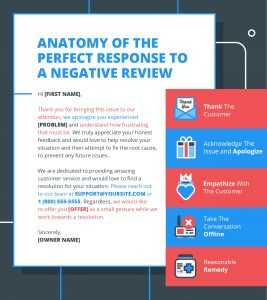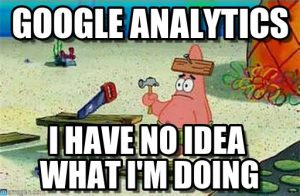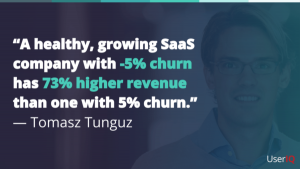The Jackson 5 said it best: “Easy as 1-2-3.”
You knew they were talking about email marketing, right?
Seriously though, this is one of the easiest and most effective ways to craft a great lifecycle email. We use it ourselves and I really think you’ll find value in it.
First, a bit of context.
Lifecycle emails are meant to keep people moving in the right direction. A good lifecycle email earns you a second date, not marriage. Like bumpers in a bowling alley, lifecycle emails just keep the ball out of the gutter.
It’s not that you shouldn’t be aiming for a conversion – you absolutely should – but you can’t go for it without laying the groundwork first. Lifecycle emails do just that.
As a rule, lifecycle emails MUST be:
- Relevant and contextual (recipients should understand why they received the message)
- Dead simple
- Focused on small conversion goals
With that in mind, let’s look at one very easy way to create these emails.
The 1-2-3 Method Explained
Imagine that Tyrion Lannister was in the market for software to help manage King’s Landing’s finances. Wouldn’t that make life as Master of Coin a little easier?
Here’s what the welcome email might look like:
Dear Tyrion,
Welcome to QuickCoin, the best app for moving from coin to cloud. Here’s what you should do next to make the most of your free trial:
1. Complete your profile
2. Integrate your bank account with QuickCoin
3. Download our mobile app
If have any questions for our support team, just hit reply to this email and we’ll be happy to assist you.
Cheers,
The QuickCoin Team
That’s the 1-2-3 method. Simple and actionable.
Once people sign up for a trial, subscribe to a newsletter or create an account, you need to build on that momentum by telling them exactly what to do next. Never assume they know the next step. The longer you wait nudge them, the lower the chance they will take that action.
The 1-2-3 method works because it makes any process simple (“It’s easy as 1-2-3″). It’s easy for the recipient to process and take action. (By the way, if you’re asking them to do more than three things, you are asking too much.)
How To Get Started With The 1-2-3 Method
As part of your onboarding process, it’s a good idea to look what actions correlate with short and long term engagement.
For example, Twitter knows that they need to get new users to complete their profile. It gives Twitter additional data they can use to suggest accounts to follow and it helps get users comfortable on Twitter.com. Once on the site, Twitter can even offer visual cues to get acquaint users with all of the features.
Completing the profile opens a lot of doors so it’s no surprise that they send this 1-2-3 email to new users. Not only does it ask the users to complete three steps, it even matches the three steps with a visual guide to alleviate any anxiety about continuing with the onboarding process.
Airbnb does the same thing, increasing the level of commitment with each action item.
Further, Brian Clark’s new curation project, uses the 1-2-3 method in a personal, plain text welcome email.
You see where I’m going with this. Here are few more examples just for inspiration.
More 1-2-3 Email Examples
This is a great email from Pinterest. Notice how the 1-2-3 method is paired with a strong call to action.
Elevate, the popular brain training app, employs this tactic masterfully. They use bullet points to address reasons that users churn. Then, they alleviate the user’s concerns with short, comforting tips about the app. Really well done.
(They send great emails. It’s worth signing up just to see how lifecycle email is done.)
Here’s one last example from 500px, who points users to three features of the service they haven’t tried yet. You don’t need numbers for the 1-2-3 method to work, you just need three distinct and actionable items.
When NOT To Use The 1-2-3 Method
It goes without saying that this isn’t a format that should be used for every lifecycle email but let me explain why.
As you test your lifecycle emails and improve your onboarding, you will discover quantitative data about what actions turn free trial users into customers. If you dig really deep, you might even be able to link the onboarding action items that lead to great, long-term customers.
When you’ve nailed down those actions, you can target users in very specific points in their lifecycle. Don’t bother with three things if you know one will get the job done.
Here’s a perfect example from Shopify.
They know that free trial users who actually add products to their online store are more likely to become paying customers. When users can sell products, the return on their investment with Shopify is obvious.
So when they send onboarding emails, they focus only on encouraging users to add products. They even give users stock images to create dummy products so they can see how the platform works.
Super smart email and a great example of when NOT to use the 1-2-3 method.
The 1-2-3 method is another tool to add to your arsenal (and I bet you’ll start noticing it in your inbox all the time now).
Have you used this method before? Let us know how it worked in the comments.
(417)











